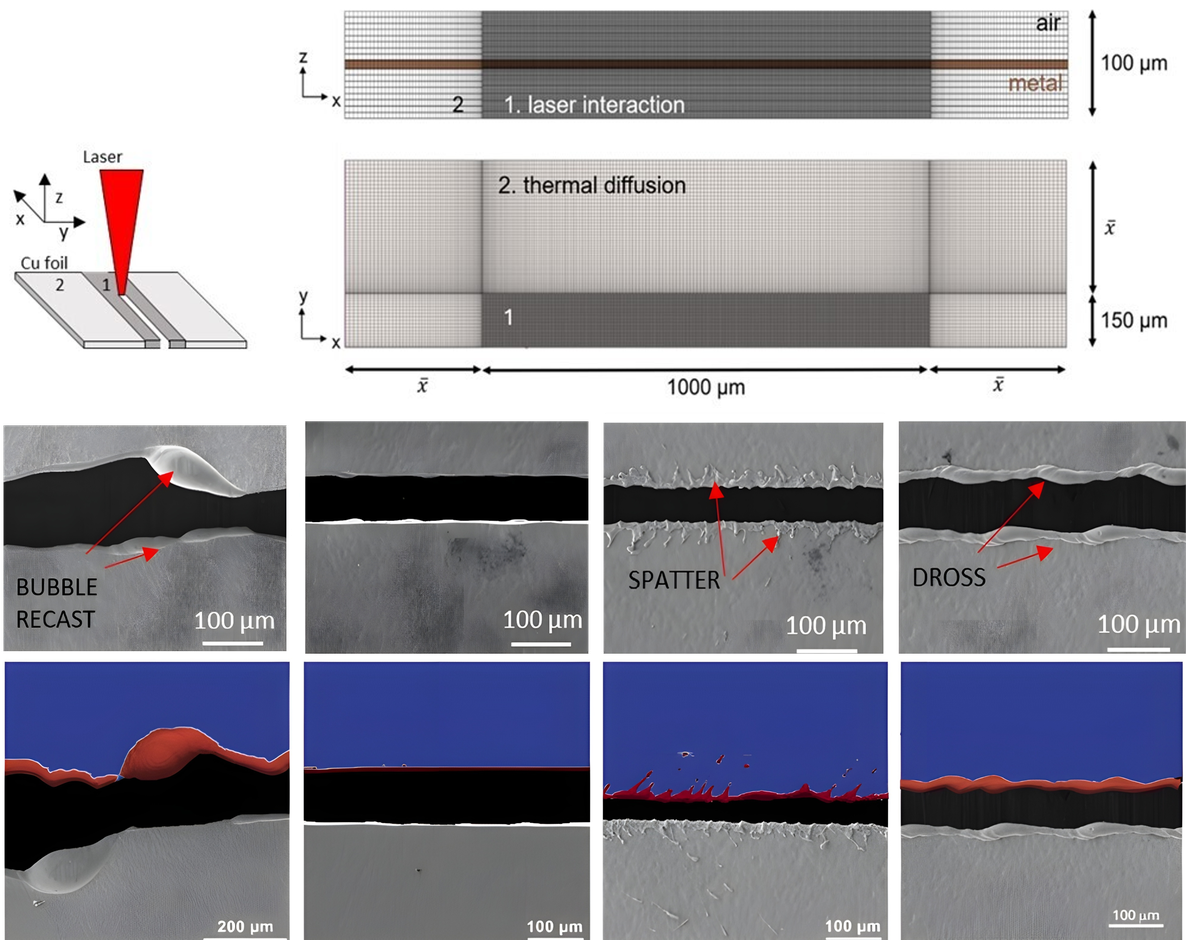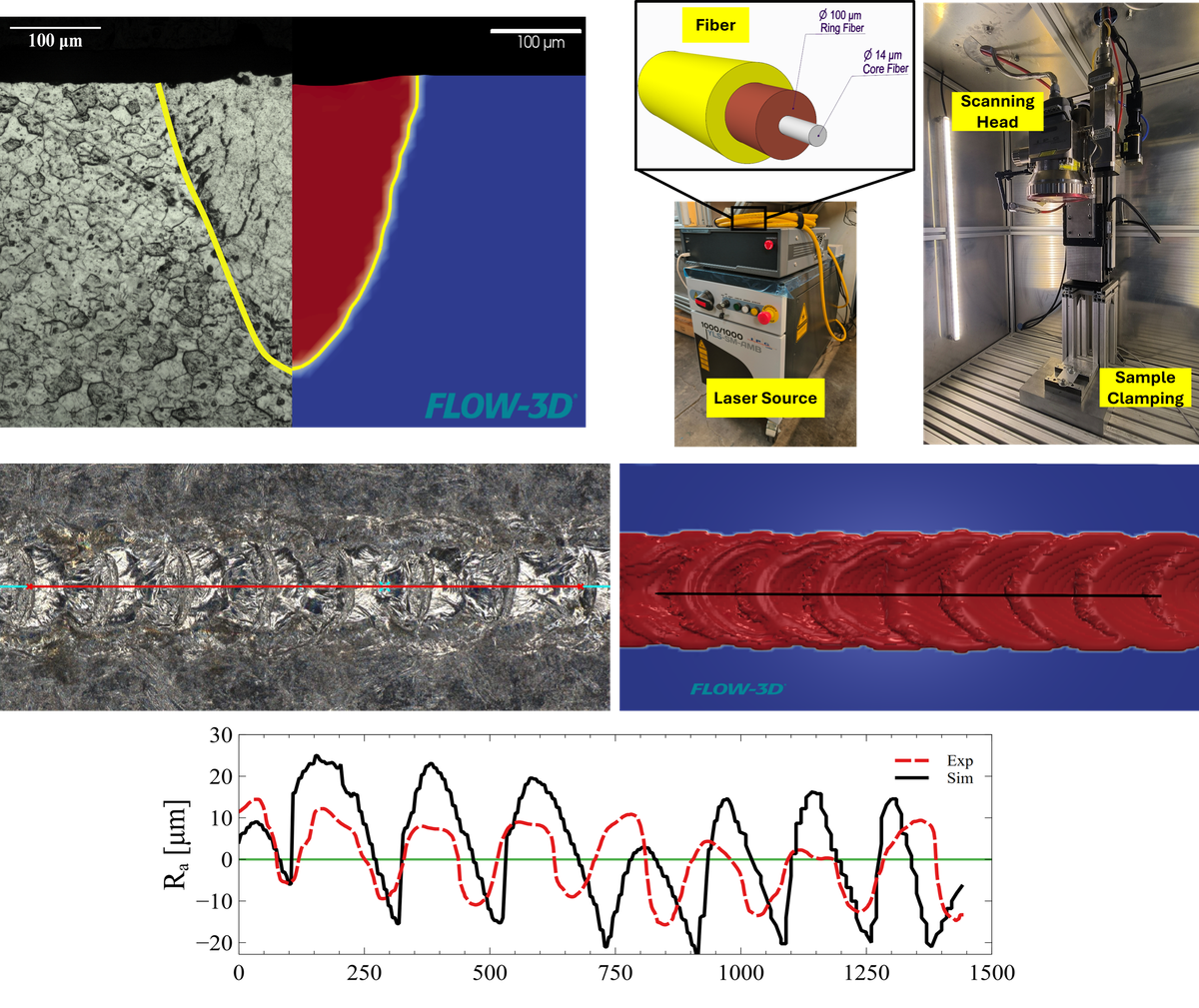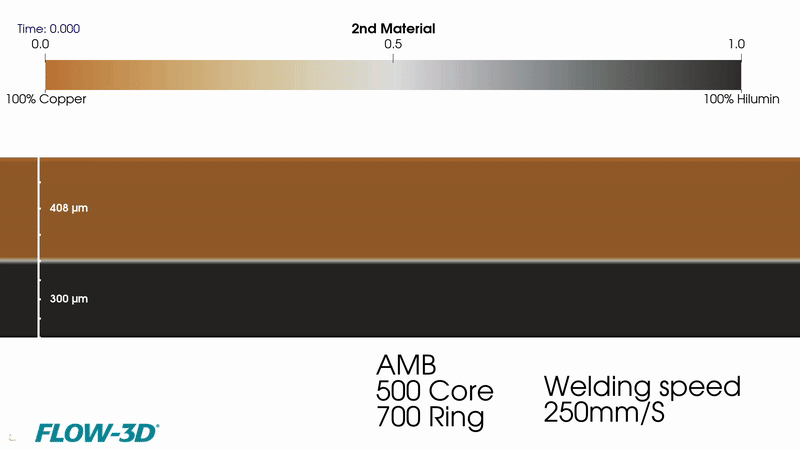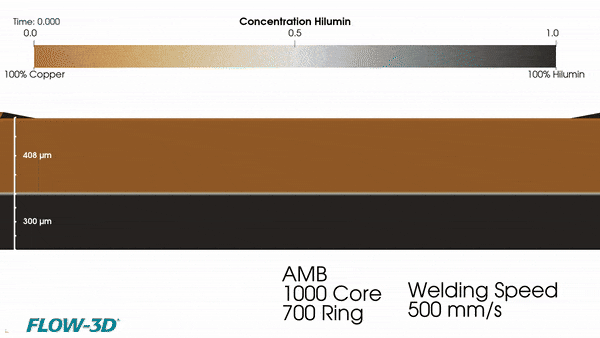Laser Process Simulations
We apply CFD models for the study and optimization of processes involving lasers
In recent years, the Laser Group has been actively engaged in the numerical modeling of laser-based manufacturing processes to better understand key physical phenomena and optimize process parameters. Using advanced multi-physics simulation tools, the research focuses mainly on laser welding and cutting for the automotive sector.Numerical simulations enable the prediction of process outcomes, reducing the need for extensive experimental trials and accelerating the development of innovative laser technologies for industrial applications.

Numerical simulation of laser cutting for a current collector used in electric vehicle battery packs. The model accurately reproduces common defects in the process, showing their dependence on operating parameters such as power and cutting speed.

Numerical simulation of laser welding using a non-conventional Adjustable Mode Beam (AMB) source, composed of a central core and an outer ring. The model accurately predicts both the weld bead geometry and surface roughness in pulsed mode, providing valuable insights for process optimization.


Numerical simulation of multi-material laser welding between steel and copper at varying process parameters (power, speed, and power distribution between core and ring). The model captures material mixing dynamics and highlights the formation of porosity defects at excessively high welding speeds.


Temperature field evolution during laser welding, predicted using a Physics-Informed Neural Network (PINN). By integrating machine learning with numerical simulation and process monitoring, this approach enables faster and more efficient optimization of laser welding parameters.